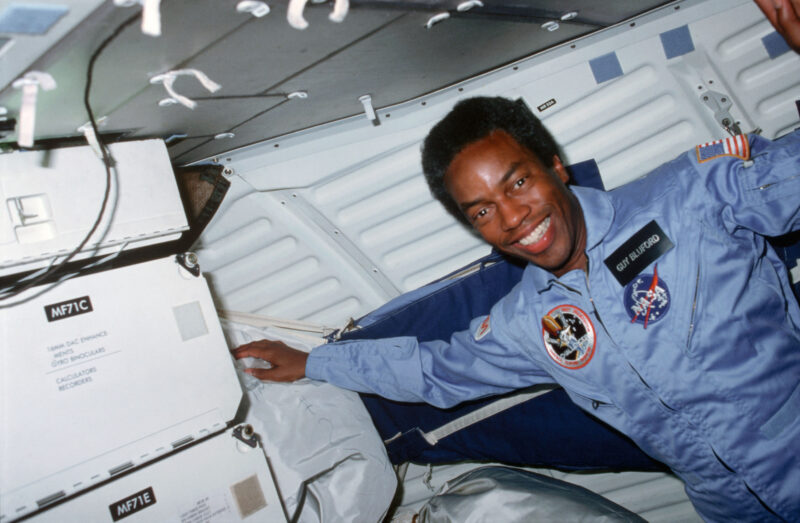The First African American in Space, Guion Bluford, Remains Hopeful for More Black Astronauts
Share
Explore Our Galleries
Breaking News!
Today's news and culture by Black and other reporters in the Black and mainstream media.
Ways to Support ABHM?
Daniel Johnson, Black Enterprise

On Aug. 30, 1983, Guion “Guy” Bluford became the first Black American to reach space. But 40 years later, only 16 Black Americans have entered space.
Bluford’s mission marked the first time the space shuttle was both launched and landed at night, and it was supposed to usher in progress towards the first Black American on the moon. However, that never happened. Bluford, now 80, still holds out hope that more Black people will become astronauts.
Bluford told The Houston Chronicle “I don’t know what I expected, but I’m hopeful that we’ll get more and more African Americans in the future coming into the astronaut program.”
As the Chronicle reported, Bluford and others said that a big barrier is education, as Black students are underrepresented in STEM careers, which are prerequisites for the astronaut program. In addition to this, there have only been 16 Black people to fly with the space program, so visibility is also a factor. However, the Black astronauts who have flown are a tight group, often checking in with each other.
During policeman Derek Chauvin’s trial for the murder of George Floyd, the group of astronauts organized a video call to the International Space Station to make sure fellow Black astronaut Victor Glover was doing okay. In 2022, they called to check up on Jessica Watkins, who became the first Black woman to complete an International Space Station long-term mission, when she was on the station. Glover and Watkins comprise half of the active Black NASA astronauts who are available to be assigned to missions, but there are two more who are in the process of completing their training.
Read more about Bluford and his fellow Black astronauts in the original article.
Learn more about NASA’s African-American history in this Breaking News article.
Find even more Breaking News here.











Comments Are Welcome
Note: We moderate submissions in order to create a space for meaningful dialogue, a space where museum visitors – adults and youth –– can exchange informed, thoughtful, and relevant comments that add value to our exhibits.
Racial slurs, personal attacks, obscenity, profanity, and SHOUTING do not meet the above standard. Such comments are posted in the exhibit Hateful Speech. Commercial promotions, impersonations, and incoherent comments likewise fail to meet our goals, so will not be posted. Submissions longer than 120 words will be shortened.
See our full Comments Policy here.